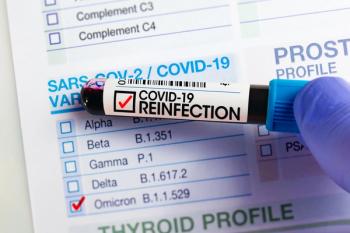
- July 2023 Influenza Supplement
Community Pharmacy’s Next Mission: Closing Immunization Gaps Among Vulnerable and Underserved Populations
Every pharmacist can make a difference in patients’ lives by taking the time to understand and fulfill the community’s social and cultural needs.
During the COVID-19 pandemic, members of the health care industry came together to help distribute vaccines to many communities and immunize patients in record-breaking time. Among underserved and vulnerable populations, the pandemic also brought to light several challenges and inequities in the health care system; these included gaps in vaccination uptake, social misconceptions about vaccines, and other long-standing issues. Health care providers recognized that the disparities observed in COVID-19 vaccine uptake mirrored challenges and inequities long seen with influenza vaccination. This article examines these barriers among the most vulnerable populations and highlights how the success of national COVID-19 vaccination programs provided key learnings and a call to action for best serving these communities.
Exposing a Continuing Care Gap: Influenza Vaccination Uptake
The Healthy People initiative released by the US Department of Health and Human Services (HHS) each decade identifies science-based public health objectives with targets to monitor progress.1 As part of its objective to increase annual influenza immunization rates, Healthy People 2020 set out to vaccinate 70% of the population against the seasonal acute respiratory infection. However, the country did not reach this target in 2020—51.6% of the population was vaccinated for the 2019-2020 season. The Healthy People 2030 target goal was kept at 70%. Data available thus far for the current initiative indicate declining influenza vaccination rates, with 49.8% of all persons vaccinated against the virus during the 2020-2021 season.2
The results of studies examining influenza vaccine uptake among different populations revealed lower vaccination rates in vulnerable and underserved communities, including certain racial and ethnic minority groups. For example, Black individuals have lower influenza immunization rates than do White individuals; further, Black individuals tend to have higher rates of chronic conditions or comorbidities leading to a greater risk of influenza-related complications and adverse outcomes.3 In a retrospective cohort study, Mahmud et al examined the effect of race and ethnicity on influenza vaccine uptake among Medicare beneficiaries (age, ≥ 65 years) using Medicare data from July 15, 2015, to June 30, 2016.4 When compared with White individuals (49.4%), beneficiaries who identified as being Hispanic (29.1%), Black (32.6%), or Asian (47.6%) were less likely to have received a seasonal influenza vaccine. Racial and ethnic disparities were even greater when income, sex, and regional inequities were considered.
Similar vaccination disparities have been noted in vulnerable communities. According to data from the CDC, during the 2021-2022 flu season, influenza vaccination was given to 54% of White adults, 42% of Black adults, 41% of American Indian/Alaska Native adults, and 8% of Hispanic adults.5 Further, patients with influenza in these populations had higher rates of hospitalization than did White patients (Figure 1).5 These differences have been observed since at least 2010. Additionally, influenza-related hospitalization rates were 80% higher among Black adults than among White adults. There is evidence that the COVID-19 pandemic increased influenza vaccine uptake; still, racial differences persisted, with Black individuals (41.5%) and Hispanic people (38.4%) having lower vaccination rates than did White individuals (47.5%).6
Examining Vaccination Barriers in Vulnerable Populations
The data are clear—barriers exist. Contributing factors must be assessed to identify barriers and create strategies to address them. Bazargan et al conducted a community-based, cross-sectional study to examine factors related to influenza vaccination status in 620 underserved Black adults 65 years or older.7 A total of 32% of participants never received a flu vaccine, and 49% indicated that they received a flu vaccine within the previous 12 months. Almost 79% of participants stated that a health care provider recommended influenza vaccination during the previous 12 months; however, only 45% of these individuals were immunized during that time. The investigators determined that low influenza vaccine uptake was associated with a lack of care continuity and less satisfaction with the accessibility, availability, and quality of care. Participants who were at least 75 years old, who lived alone, or who had more symptoms of depression were less likely to be vaccinated.
Hunsaker et al examined perceptions about vaccine-preventable diseases and vaccination using a cross-sectional survey in underserved, uninsured adults visiting a free urban clinic.8 Respondents generally believed that vaccines were safe and effective in adults and children, but they were less clear about their beliefs involving personal risk of vaccine-preventable diseases. Most patients received health information from health care providers, whom they also considered to be their most trusted source. Although the majority of respondents (62.6%) believed that they were up-to-date on recommended vaccinations, 66.4% of participants indicated that they had not been advised about vaccines during the previous year. The most common barriers to vaccination were lack of knowledge regarding necessary vaccinations and lack of insurance.
In a prospective survey, Padilla et al assessed influenza vaccination rates among the Hispanic lesbian, gay, bisexual, transgender, queer/questioning, intersex, and allies (LGBTQIA) community and identified factors that influence attitudes, beliefs, and perceptions related to influenza vaccine uptake. The 2 most influential factors affecting vaccine uptake among the 126 respondents were ease of receiving vaccination and the perception that influenza could be contracted from the vaccine. Disclosure of sexual orientation to the health care provider had no impact on influenza vaccine uptake. The authors acknowledged that additional studies are needed to assess factors affecting immunization uptake rates in the LGBTQIA population.9
Assessing Pharmacist-Led Vaccine Administration During Pandemics
On March 13, 2020, then-President Donald J. Trump declared a national Public Health Emergency (PHE) that set in motion several actions and historical events.10 Since that initial declaration, communities across the country endured hardships (eg, stay-at-home orders, closed schools and businesses, and rationing of personal protective equipment) that they never experienced and that changed perceptions, behaviors, and the lives of so many. Communities also reset priorities and experienced triumphs that resulted from heroic efforts of many individuals who came together to solve problems and support the needs of the community.
On May 11, 2023, HHS Secretary Xavier Becerra announced the expiration of the COVID-19 PHE.11 This announcement marked the beginning of a critical time to reflect on the past 3 years and use the knowledge and experiences gained to plan for the future. The skills and new ways of working together must be applied to other public health needs that existed before the PHE— and the pharmacy workforce is prepared to confront these challenges.
Increasing Access to COVID-19 Vaccines in Community Pharmacy
The COVID-19 pandemic was marked with major milestones and achievements. One of the most significant strides for pharmacy was the distribution and administration of the COVID-19 vaccines. To combat the threat of the COVID-19 virus, government leaders formed public-private partnerships that matched scientists, manufacturers, distributors, and health care providers to create, test, approve, ship, and ultimately administer lifesaving COVID-19 vaccines at an accelerated pace. Providers from multiple disciplines added trained personnel and adjusted processes to receive and store vaccines under special conditions to protect the cold chain. Community pharmacists have been convenient and accessible sources of vaccines since they were first trained as immunizers in 1994, and they were a critical part of this chain.12 The nation needed pharmacists, who have an established a track record of meeting patient care needs during emergencies (eg, the H1N1 pandemic).13
For some 90% of US residents, a community pharmacy is located within 5 miles.14 In many rural and underserved areas, pharmacists may be the only accessible health care providers.14 Because of this, the CDC established the Federal Retail Pharmacy Program (FRPP) to distribute COVID-19 vaccines to chain and independent community pharmacies.15 In addition, HHS initially amended the Public Readiness and Emergency Preparedness Act to grant pharmacists, interns, and pharmacy technicians the authority and immunity against liability to provide COVID-19 vaccinations.16 Gaps in routine childhood immunizations were linked to missed pediatrician visits during the height of the pandemic; another amendment granted authority to trained pharmacy team members to administer catch-up routine immunizations as recommended by the CDC’s Advisory Committee on Immunization to children aged 3 to 18 years. With the end of the COVID-19 PHE, pharmacists, pharmacy technicians, and pharmacy interns will still be able to administer COVID-19 vaccines and other countermeasures, but they will no longer have the authority to administer routine childhood vaccinations.17
Addressing Access to Influenza Vaccines During the Pandemic
Pharmacists also had an impact on influenza vaccine administration during the COVID-19 pandemic. With many physician offices closed and access to other health care facilities limited, there was concern that influenza vaccination rates could decrease. The CDC, which tracks influenza site administration data obtained from IQVIA, found that pharmacies consistently outpaced physician medical offices in the number of adult influenza vaccinations given.18 During the COVID-19 pandemic, pharmacists were one of the most accessible types of health care providers.19 For the 2020-2021 influenza season, pharmacy personnel administered approximately 15 million more influenza vaccinations than did staff in physician offices. These data are captured in Figure 2.18
Pharmacies can improve vaccine access in vulnerable communities. Popovian et al conducted a national study to determine whether adults who live in low-income communities, and a subset of those who are at least 65 years old, have better access to vaccines in pharmacies or physician offices.19 Data were collected from October 1 to November 30, 2021, using zip code tabulation area results, the national provider database (maintained by the Centers for Medicare & Medicaid Services), and the National Council for Prescription Drug Programs, Inc, dataQ Pharmacy Database. In low-income communities, there were 15% more pharmacies than physician offices. With adjustment for hours of operation, pharmacies provided over 95% more operating hours than did medical offices. In a subanalysis of Medicare billing capability, pharmacies offered 203% more locations than did physician offices. The investigators concluded that pharmacies can play a key role in improving vaccine access in low-income communities, especially for older Medicare beneficiaries.
The increased accessibility offered by community pharmacies was critical for public health efforts during the pandemic. Throughout the United States, more than 676 million doses of the COVID-19 vaccine have been given.20 Pharmacies have had an important role in this effort. US FRPP participants have reported administering over 303.7 million doses of the COVID-19 vaccine as of June 8, 2023; these include 8 million doses given to residents of long-term facilities when the vaccination program began.15 During the COVID-19 pandemic, pharmacists once again demonstrated resilience under pressure and the ability to meet the critical public health needs of the communities they serve. Skills developed during the COVID-19 vaccination efforts are transferable, and they must be applied to closing all immunization gaps, beginning with that involving the annual influenza vaccination, in vulnerable communities.
Closing Disparity Gaps in Immunization
Education and awareness are typically listed as primary objectives in addressing immunization gaps. Targeted education strategies are important; however, experts recommend starting with “upstream factors” that can impede health. These factors, such as social determinants of health (SDOH), are not usually related to health care delivery, but they can have a major impact on health, well-being, and quality of life. SDOH include 5 domains—economic stability, education access and quality, health care access and quality, neighborhood and built environment, and social and community context (Figure 3).21 Factors associated with SDOH include access to safe housing, transportation, and neighborhoods; capability to gain education, job opportunities, and income; ability to enjoy nutritious foods and physical activity; achievement of language and literacy skills; experience with racism, discrimination, and violence; and exposure to polluted air and water. Healthy People 2030 includes the SDOH framework as 1 of the initiative’s 5 overarching goals.21
Time spent on providing education and building trusted relationships will not have an impact if potential vaccine recipients are struggling with housing, education, transportation, access to food, and general medical care barriers. Addressing SDOH barriers requires coordinated efforts with community leaders and referrals to available programs and services to improve the foundations of care. With these critical basic needs in mind, McKesson Corporation recently provided scholarships through the Social Innovation team for certified pharmacy technicians who work in independent community pharmacies across the country to take part in a 16-week community health worker training program offered by CEimpact, an accredited provider of continuing pharmacy education.22 Such training will enable a certified pharmacy technician, who is often an integral member of the neighborhood, to serve as a connection point for matching needs with community resources. In addition, as a part of critical work coordinated by McKesson’s Social Innovation team, Health Mart pharmacies have access to a closed loop SDOH referral platform (https://healthmart.findhelp.com) that can strengthen patient care services provided across the franchise.23
After assessing SDOH and matching available resources to ensure that individuals are living under safe circumstances, further community engagement is needed. In 2020, the CDC created the Partnering for Vaccine Equity (P4VE) program to foster community-level partnerships and address racial and ethnic differences in vaccine access.24 Key goals of P4VE are to:
- reach people directly in their communities;
- enable ambassadors and influential messengers who represent those in need and who can convey the messages to drive action; and
- engage people with accurate information to dispel myths and encourage uptake through online and social media.
Closing the Diversity Gap in Pharmacy
In addition to fostering community partnerships, it is critical to ensure that more students in underrepresented populations pursue careers as pharmacists who are well-prepared to serve all patients. To be culturally competent and to improve patient care and outcomes, health care providers and organizations must address the cultural, social, and linguistic needs of their patients.25 However, the modest representation of pharmacists who identify as being Black (7.0%), Hispanic or Latino (5.6%), and American Indian or Alaska Native (0.1%) lags behind the overall diversity of the United States.26,27 Improving diversity and cultural competency skills among pharmacists can lead to more inclusive care and drive better patient outcomes.
To address this challenge, the McKesson Foundation is contributing to the diversification of the pharmacist talent pipeline.28 It is donating more than $4 million in grants over the next 5 years to pharmacy schools at 5 US universities: Hampton University, the University of Michigan, the University of Minnesota College of Pharmacy, the University of North Carolina at Chapel Hill, and the University of New Mexico. The grants aim to boost the number of pharmacy students from diverse backgrounds and enhance the cultural competency of all pharmacy students.
A Call to Action for Pharmacists
With their ability to immunize patients, pharmacists have made a considerable impact on public health for nearly 3 decades. Community pharmacies overcame obstacles, served as reliable resources for their areas, and boosted confidence and trust in pharmacists during the COVID-19 pandemic. With the established need to reduce disparities involving uptake of influenza vaccination in vulnerable communities, pharmacists must now leverage their accessibility, knowledge, trust, and experience to engage with patients.
Every pharmacist can make a difference in patients’ lives by taking the time to understand and fulfill the community’s social and cultural needs. Cultural competency training is a starting point to form these connections and gain the trust needed to provide care. Pharmacists must leverage creative partnerships with trusted members of local communities to offer vaccine awareness tools and resources, education, and vaccine clinics in neighborhood centers, churches, schools, or other gathering places. It is important for pharmacists to enlist support from influential local leaders who can model behaviors (eg, receiving an influenza vaccine) and extend trusted relationships.
As partnerships are established, so are opportunities to engage the next generation. It is important to leverage these events and venues to inspire and share the important role that pharmacists play in patients’ lives. Neighborhood youths and students should be encouraged to explore a career in pharmacy and make a difference in individuals’ lives. Mentoring future pharmacists is a responsibility that all pharmacists accepted when they took their professional oath. Closure of the influenza gap is the next mission for community pharmacy. Considering all their accomplishments during the most recent public health emergency, pharmacists remain strong and ready to continue to make a difference in providing optimal health care for vulnerable, disadvantaged, and underserved groups.
About the Author
Nancy Lyons, BSPharmd, MBA, CDCES, is vice president and chief pharmacy officer at Health Mart Systems, a part of McKesson Corporation, in Irving, Texas.
References
- Healthy People 2030 framework. US Department of Health and Human Services. Accessed June 19, 2023. https://health.gov/healthypeople/about/healthy-people-2030-framework
- Increase the proportion of people who get the flu vaccine every year — IID09. US Department of Health and Human Services. Accessed June 19, 2023. https://health.gov/healthypeople/objectives-and-data/browseobjectives/vaccination/increase-proportion-people-who-get-flu-vaccineevery-year-iid-09/data#data-chart
- Quinn SC. African American adults and seasonal influenza vaccination: changing our approach can move the needle. Hum Vaccin Immunother. 2018;14(3):719-723. doi:10.1080/21645515.2017.1376152
- Mahmud SM, Xu L, Hall LL, et al. Effect of race and ethnicity on influenza vaccine uptake among older US Medicare beneficiaries: a record-linkage cohort study. Lancet Healthy Longev. 2021;2(3):e143-e153. doi:10.1016/S2666-7568(20)30074-X
- Inequities in flu vaccine uptake. CDC. Updated October 18, 2022. Accessed June 19, 2023. https://www.cdc.gov/vitalsigns/flu-inequities/index.html
- Li K, Yu T, Seabury SA, Dor A. Trends and disparities in the utilization of influenza vaccines among commercially insured US adults during the COVID-19 pandemic. Vaccine. 2022;40(19):2696-2704. doi:10.1016/j.vaccine.2022.03.058
- Bazargan M, Wisseh C, Adinkrah E, et al. Influenza vaccination among underserved African-American older adults. Biomed Res Int. 2020;2020:2160894. doi:10.1155/2020/2160894
- Hunsaker A, Applegate A, Bowers BL. Vaccine perceptions in a free urban clinic for underserved, uninsured adults. J Am Pharm Assoc (2003). 2022;62(1):334-339. doi:10.1016/j.japh.2021.10.003
- Padilla ME, Frietze GA, Aguirre M, et al. Understanding influenza immunization uptake rates among the Hispanic LGBTQIA community. J Am Pharm Assoc (2003). 2019;59(4):560-564.e2. doi:10.1016/j.japh.2019.02.007
- Proclamation on declaring a national emergency concerning the novel coronavirus disease (COVID-19) outbreak. National Archives and Records Administration. Issued March 13, 2020. Accessed June 19, 2023. https://trumpwhitehouse.archives.gov/presidential-actions/proclamation-declaring-national-emergency-concerning-novelcoronavirus-disease-covid-19-outbreak/
- HHS Secretary Xavier Becerra statement on the end of the COVID-19 public health emergency. Press release. US Department of Health and Human Services. May 11, 2023. Accessed June 19, 2023. https://www.hhs.gov/about/news/2023/05/11/hhs-secretary-xavier-becerra-statement-on-end-of-thecovid-19-public-health-emergency.html
- Hogue MD, Grabenstein JD, Foster SL, Rothholz MC. Pharmacist involvement with immunizations: a decade of professional advancement. J Am Pharm Assoc (2003). 2006;46(2):168-179. doi:10.1331/154434506776180621
- Pandemic policy and the logistics of COVID-19 mass vaccination. Homeland Security Affairs. December 2020. Accessed June 19, 2023. https://www.hsaj.org/articles/16514
- Berenbrok LA, Tang S, Gabriel N, et al. Access to community pharmacies: a nationwide geographic information systems cross-sectional analysis. J Am Pharm Assoc (2003). 2022;62(6):1816-1822.e2. doi:10.1016/j.japh.2022.07.003
- The Federal Retail Pharmacy Program for COVID-19 vaccination. CDC. June 8, 2023. Accessed June 19, 2023. https://www.cdc.gov/vaccines/covid-19/retail-pharmacy-program/index.html
- Department of Health and Human Services. Office of the Secretary. Third amendment to declaration under the Public Readiness and Emergency Preparedness Act for medical countermeasures against COVID-19. Federal Register. 2020;85(164):52136-52141. https://www.govinfo.gov/content/pkg/FR-2020-08-24/pdf/2020-18542.pdf
- Fact sheet: HHS announces intent to amend the declaration under the PREP Act for medical countermeasures against COVID-19. Press release. US Department of Health and Human Services. April 14, 2023. Accessed June 19, 2023. https://www.hhs.gov/about/news/2023/04/14/factsheet-hhs-announces-amend-declaration-prep-act-medical-countermeasures-against-covid19.html
- Influenza vaccinations administered in pharmacies and physician medical offices, adults, United States. CDC. April 28, 2023. Accessed June 19, 2023. https://www.cdc.gov/flu/fluvaxview/dashboard/vaccination-administered.html
- Popovian R, Winegarden W, Rivera E, Gavigan K. Accessibility of adult immunizations in pharmacies compared to physician offices in low-income communities. J Am Pharm Assoc (2003). 2022;62(5):1644-1647. doi:10.1016/j.japh.2022.03.021
- COVID data tracker. CDC. Updated May 11, 2023. Accessed June 19, 2023. https://covid.cdc.gov/covid-data-tracker/#vaccinations_vaccpeople-booster-percent-pop5
- Social determinants of health. Healthy People 2030. US Department of Health and Human Services. Accessed June 19, 2023. https://health.gov/healthypeople/priority-areas/social-determinants-health
- McKesson funds 60 scholarships for pharmacy technicians. Chain Drug Review. January 18, 2023. Accessed June 19, 2023. https://www.chaindrugreview.com/mckesson-funds-60-scholarships-for-pharmacy-technicians/
- HealthMart website. Accessed June 19, 2023. https://healthmart.findhelp.com/
- Partnering for vaccine equity a year later. CDC. Accessed April 22, 2023. https://www.cdc.gov/vaccines/health-equity/downloads/partneringvaccine-equity-year-later-508.pdf
- Cultural competence in health care: is it important for people with chronic conditions? Georgetown University Health Policy Institute. Accessed May 24, 2023. https://hpi.georgetown.edu/cultural/#
- Pharmacist demographics and statistics in the US. Zippia. Updated September 9, 2022. Accessed June 19, 2023. https://www.zippia.com/pharmacist-jobs/demographics/
- Quick facts, United States. Population estimates, July 1, 2022. US Census Bureau. Accessed June 19, 2023. https://www.census.gov/quickfacts/fact/table/US/PST045222
- McKesson Foundation awards $4.1 million to pharmacy schools to help close diversity gap and improve health outcomes. Press release. McKesson. November 7, 2022. Accessed May 24, 2023. https://www.mckesson.com/About-McKesson/Newsroom/Press-Releases/2022/McKesson-Foundation-Awards-4-Million-Pharmacy-Schools-Close-Diversity-Gap-Improve-Health-Outcomes
Articles in this issue
over 2 years ago
Next-Generation Vaccines and Therapies for Seasonal Influenzaover 2 years ago
2022-2023 Influenza Season: Activity and Vaccine EffectivenessNewsletter
Stay informed on drug updates, treatment guidelines, and pharmacy practice trends—subscribe to Pharmacy Times for weekly clinical insights.


















































































































































































































